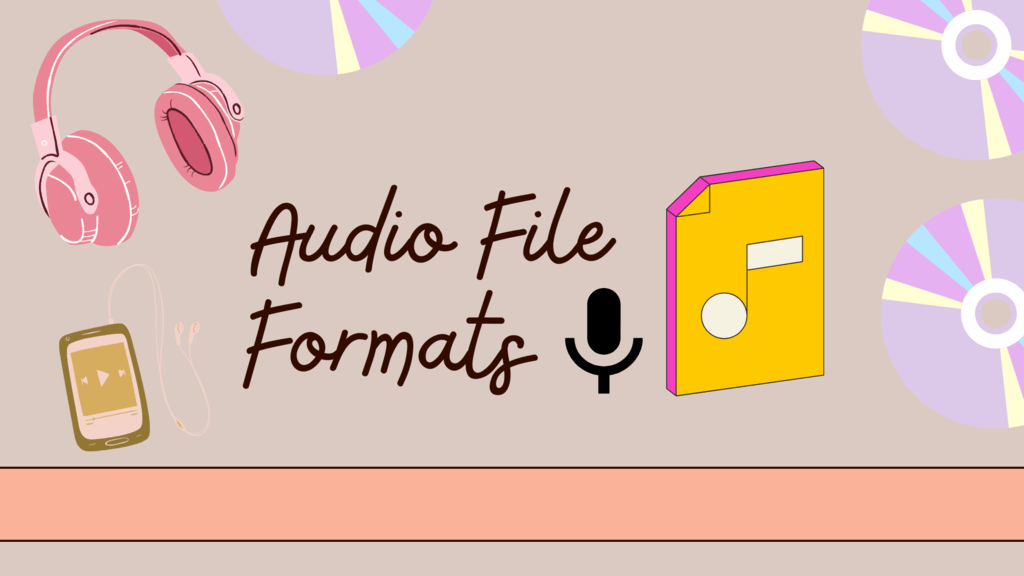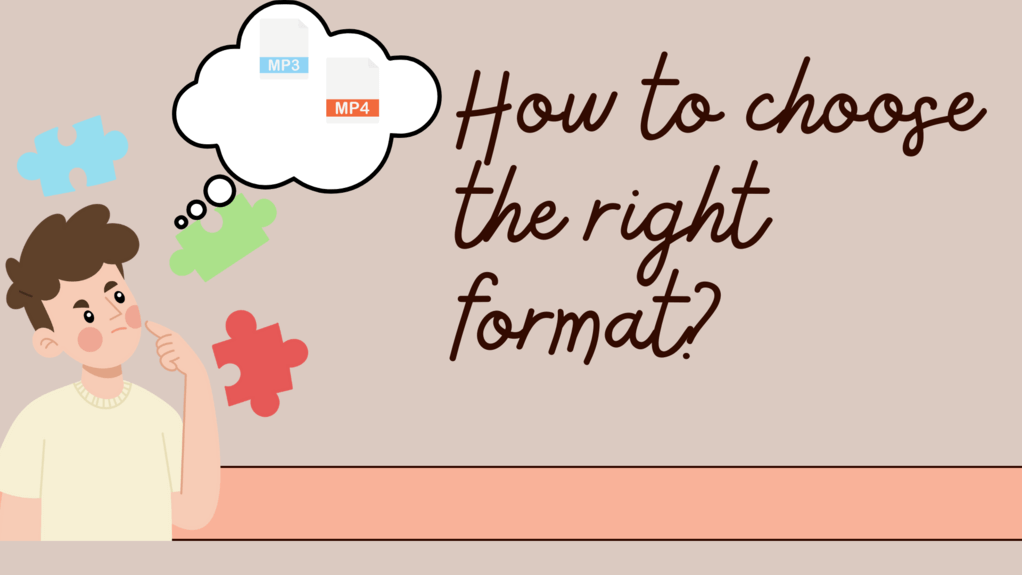How to Save Files in Audacity Guide: Hey there, sound enthusiasts—whether you’re just starting out or already weaving sonic wonders, the struggle of saving your audio masterpiece in Audacity is real. Clicking “save” is just the tip of the iceberg in this creative sea of sound. It’s not about a simple save; it’s an art—a delicate balance between securing your intricate arrangements and ensuring they play seamlessly.
We’re here to guide you! Enter “Save Files in Audacity: A Pro’s Guide. ” This AudacityGuide article will be your backstage pass to the core of Audacity file management. We’ll spill the secrets of how you can save files in Audacity more easily.
Join us on a journey through Audacity’s serene realms, where saving files isn’t just a task—it’s an art. Ready to level up your audio game and protect your sounds like a seasoned pro? Let the musical adventure begin!
On this page, you’ll learn about the following:
How to Save Files in Audacity: Step-by-Step Guide

To save a project, you can use these three main commands:
To Save
Press “File” and then “Save Project.” The project saves a file called.aup3.
You can save an existing project with a new name by going to File > Save Project > Save Project As. (This will open the new project and close the old one.)
You can save a copy of your current project by going to File > Save Project > Backup Project. The original project will stay open so you can continue to make changes.
This either saves or changes the.aup3 project file.
You can save unfinished work as a project and then open it again later in Audacity to find it exactly as it was, with all edits and recorded or imported tracks still there (except for the undo history).
Remember: You can’t use certain characters in the name of an.aup3 file if they are reserved for the operating system. This applies to any file type.
The best way to save an Audacity project is to go to File > Save Project. The keyboard shortcut for this command is Ctrl + S (or ⌘ + S on Mac). If you save a project again after making more changes, “Save Project” will automatically update the .aup3 project file without asking you to do anything.
To make a copy of a project in a different place or with a different name, the safest way is the “Backup Project.” You can use this copy as a single backup copy of the project or as one of several incremental copies at a certain date and time.
Open the Saved File
To open a project that has been saved:
Open the.aup3 project file by selecting File > Open or File > Recent Files, depending on your preference.
Audio File Formats

You should know what audio file formats are compatible with Audacity to save the audio file successfully. Skipping this step will cause your saving task to be interrupted and can also lead to file loss. Audacity supports import and export conversion in these audio formats:
| Audio File Format | Description |
|---|---|
| Mp3 | This is the most popular and widely used audio format because it is easy to use for compression without sacrificing the quality. |
| M4A | Apple devices widely use this. It is known for its high audio quality with a smaller file size. |
| AIFF | This uncompressed audio format preserves the original sound quality but produces larger files. |
| FLAC | The lossless audio format delivers high-quality sound while keeping file sizes manageable. |
Choosing the Right Format for Your Specific Project

Now that you know most Audacity file formats, how do you know the right format for saving your audio file? Here are some key considerations to help you decide:
What You’re Editing
Are you editing for a podcast, making music, or just recording your voice? For different needs, there are different formats. For example, because they are not compressed, WAV and AIFF are great for making high-quality music, while MP3 and AAC are better for podcasts or streaming online because they are compressed.
Quality vs. File Size
High-quality formats like FLAC and WAV have better sound, but their files are bigger. If you’re worried about space or speed, consider using compressed formats like MP3 or OGG, which are a good mix of quality and size.
Compatibility
Third, ensure your audio format works with the platforms or devices you plan to use it on. Some formats only work with some things. Many devices can play MP3, but some may not be able to play FLAC files.
Further Editing
If you want to make changes or process the file further, save it in a lossless format like WAV or AIFF. These formats retain quality when they are saved again, while lossy formats can. This means the audio quality stays the same while it is edited.
Distribution
If you send your work to other people, think about the format they like best. People like MP3 and AAC for streaming online because the quality and file size are good for each other. Lossless formats might be better if the audience is professional or an audiophile.
You can choose the best format for saving your audio in Audacity by weighing these factors against the needs of your project. Always remember that there are trade-offs between quality, file size, compatibility, and how you want to use your audio file.
Techniques for File Compression and Size Reduction
There are a few things that you need to do when saving audio files in Audacity so you can compress and reduce file size while still trying to keep audio quality:
1. Pick the Right File Format: Audacity works with many audio file types, including WAV, MP3, OGG, and FLAC. Each has its own way of compressing data and using them. For example, WAV files are not compressed, so they are high-quality but have bigger file sizes. MP3s, on the other hand, have a good quality-to-size ratio, which makes them perfect for sharing online.
2. Change Bitrate Settings: You should also change the bitrate when exporting files, especially MP3s. A higher bitrate means better quality but bigger files. A bitrate of 64 to 96 kbps might be enough for spoken word recordings, but 128 to 256 kbps is usually best for music because it balances quality and size.
3. Use Mono Instead of Stereo: If the audio content doesn’t benefit much from stereo sound, you can export it in mono. If you keep the same bitrate, this can cut the file size in half compared to stereo.
4. Sample Rate Reduction: The sample rate tells how often a sound is sampled every second. Normal CD quality is 44.1 kHz, but for some types of audio, like voice-only podcasts, lowering the sample rate to 22.05 kHz or less can make the file size much smaller without any quality loss.
5. Trim Unnecessary Parts: Before exporting, cut out any parts of the audio that aren’t needed. This includes long pauses, parts that don’t belong, or mistakes in the recording. This not only makes the file smaller but it also makes listening better overall.
6. Use the “Compression” effect: Audacity has an effect called “Compression” that lowers the audio’s dynamic range. This doesn’t directly shrink the file size, but it does make the sound louder and clearer at lower bitrates, which lets the file size be shrunk even more without affecting the quality.
8. Batch Processing: To make these settings apply to all your files simultaneously, use Audacity’s batch processing feature when working with more than one. This saves time and makes sure that all files are the same.
Remember that the goal is to get the file size and sound quality right. Trying out different settings is often the best way to determine what works best for your audio content and purpose.
Troubleshooting When Saving File Issues in Audacity
When saving files in Audacity, you may encounter some issues. Here are some of the usual issues:
Audacity failed to write to a file
You may encounter this error when you have permission issues, lack of storage space, or problems with the file path. To resolve this, try the following steps:
- Check the file permissions and ensure you have the necessary permissions to write to the folder where you’re trying to save the file.
- You should also verify storage space to ensure enough storage space on your device to save the file.
- Make some corrections in the file path because sometimes the file path might be too long or contain invalid characters. Try saving the file to a different location with a shorter path.
- On Windows, try running Audacity as an administrator. This can resolve permission-related issues.
Error Opening File for Writing
You may encounter this issue if the file you are trying to overwrite is currently in use or locked by another application. To resolve this:
- Make sure the file isn’t open in another program. Close any application that might be using the file and try again.
- A system reboot can often free up locked files if you can’t identify the application using the file.
Export Formats Not Available
If you encounter some options that are greyed out or unavailable, do this:
- Install additional libraries. For some formats like MP3, Audacity requires additional libraries (like LAME MP3 encoder). Download and install these from the Audacity website.
- Make sure you have selected the correct file type from the ‘Save as type’ dropdown menu in the save dialog.
Remember, many issues in Audacity can be resolved by ensuring you’re using the latest software version and that your computer meets the necessary system requirements. Regularly saving your work and keeping backups can also prevent data loss in case of software crashes.
FAQs
Yes, you can export your project in MP3 format. You may visit our article on how to convert files into MP3 for more information. Don’t forget to adjust quality settings and include metadata before the final export.
‘Save Project’ saves your work as an Audacity project (AUP file), which keeps all your tracks, edits, and settings. This format is only readable by Audacity. On the other hand, ‘Export Audio’ allows you to save your audio in a standard format like MP3, WAV, or OGG, which can be played on most media players.
AUP is an Audacity-only file format with project data like edits, settings, and tracks. It’s not meant to be played back, and it doesn’t work with any other audio software or media players.
You can export your audio in a lossless format like WAV or FLAC for the best quality. The audio quality is kept the same in these formats because they don’t compress it. If you want better quality when exporting as MP3, choose a higher bitrate, like 320 kbps. This will make the file bigger, though.
Conclusion
This guide shows you how to save Audacity files most easily and guides you with some pro techniques. In Audacity, saving your work requires more than pressing “save.” You must know how to perfect your audio. Finding the right format, adjusting the bitrate, and playing some audio in mono can all affect file compression and size reduction.
Also, fixing common issues ensures smooth operations. Be prepared for permission errors and broken file paths to save time and stress.
This article is a complete set of tools that you can use to improve your projects. These professional tips will keep your work safe and improve it for work-related situations. Enjoy editing and perfecting your sounds!
Are you looking for concise and easy-to-follow Audacity guides? Look no further! You can find short and easy-to-follow in Audacityguide. Our tutorials, tips, and tricks will help you get the most out of your audio projects, whether you are a beginner or want to improve your skills.